We rate every iPhone launch ever: which was the best?
Which iPhone event really blew us away?
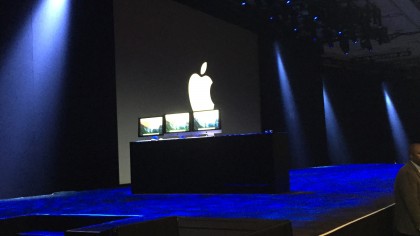
Introduction
Apple is gearing up for today's event and the internet is abuzz with speculation about what new iPhone (or iPhones) the Cupertino company will produce from its rather large hat.
One of the reasons we're so excited about Apple's event is that it's set to be the biggest one ever, and it's being held in the Bill Graham Civic Auditorium in San Francisco, which has a capacity of 7,000 – compared to last year's venue at the Flint Center in Cupertino, which held 2,400.
Apple always puts on a good show – especially when it is launching a new iPhone, so we're sure to be in for a treat. But how did the iPhone reveals of previous years go down? While we wait for the iPhone 6S and iPhone 6S Plus, let's look back and rank our favourite new iPhone moments.
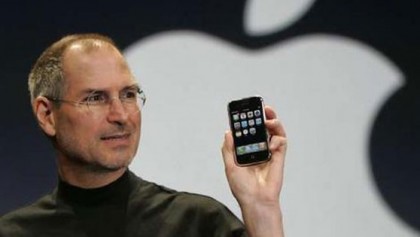
The iPhone, January 9 2007
At the Macworld Expo on January in Moscone West in San Francisco, California, Steve Jobs climbed onto the stage to announce that Apple Computer, Inc would from that point on be known as Apple Inc.
This was no ordinary name change, though, as it indicated that Apple was moving away from focusing solely on computers, and will instead be looking towards mobile devices.
Then, with a sly grin, Jobs announced that "I have been looking forward to this for two and a half years", while also promising that "today, Apple is going to reinvent the phone". With that the original iPhone was revealed, and the rest is history.
The highs: Apple and AT&T worked over two years, with a development cost of over $150 million, to bring Job's vision of a smartphone with no physical keyboard that uses a multi-touch screen instead. The final device, which Jobs described as a "widescreen iPod with touch controls" and a "revolutionary mobile phone", was a big success, and after the event Apple shares hit an all-time high of $97.80.
The lows: Although the reveal mainly went off without a hitch, the run up to the event was fraught with stress for the iPhone team. The iPhone that Jobs took on stage was a prototype that could play a section of a song or video, but would crash if the full clip was played. Apps were also incomplete at the time, and had the potential to crash when used, though luckily nothing of the sort happened, and the team went out for a few (or rather, lot) of celebratory drinks afterwards.
Rating: 9/10
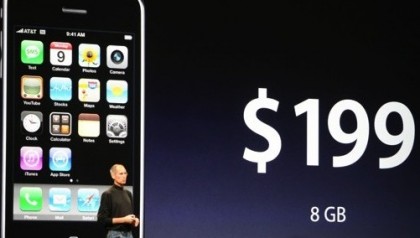
iPhone 3G, June 9 2008
At the WWDC 2008 event, held at the Moscone Center in San Francisco, Steve Jobs again took to the stage. It had been little over a year since the first iPhone had been revealed, but it had already proved to be an essential part of Apple, with Jobs explaining that "there are three parts to Apple -- the first part is Mac, second part is our music business, and the third part is the iPhone. I'm going to take this morning to talk about the iPhone."
An expert at playing the crowd, Jobs initially concentrated on the new iPhone 2.0 software, also known as iPhone OS 2.0, and it was the first version to include the App Store, which allowed users to download third party applications to their iPhones.
With the conference taking a distinctly software-focused approach, Jobs shook it up by announcing, to rapturous applause, that "today we're introducing the iPhone 3G."
With the crowed in the palm of his hand, he told us that "we've learned so much with the first iPhone. We've taken everything we've learned and more and created the iPhone 3G. It's beautiful. This is what it looks like…Thinner at the edges. Full plastic back, it's really nice.
"Solid metal buttons, the same gorgeous 3.5-inch display, camera, flush headphone jack, improved audio -- it's really, really great... and it feels even better in your hand, if you can believe it."
While the original iPhone proved what could be done with smartphones, the lack of 3G network support was a disappointment, and Apple was keen to rectify it.
Job demoed on stage how much faster downloading and displaying web pages was compared to EDGE networks, with Jobs explaining that "you can see 3G speeds are actually approaching WiFi. It's amazing, zippy."
Not only did the iPhone 3G make web browsing faster, but the 3G network compatibility was built into the iPhone's GPS system, so location services were even better. The iPhone 3G event showed that Apple wasn't resting on its laurels and was keen to keep innovating with the iPhone.
The highs: Apple showed that it had listened to what people loved – and hated – about the original iPhone, keeping what worked and overhauling what didn't. By finally embracing the then fastest mobile network speeds available, the iPhone had become an excellent device for browsing the internet.
The lows: Apple's WWDC (Worldwide Developers Conference) is typically a software-focussed event, so amongst the excitement of the new iPhone announcement, there was a lot of rather dry, and let's face it, boring talk about app development kits and operating systems. The iPhone was certainly important to Apple, but at the moment it had yet to truly give the iPhone the spotlight.
Rating 7/10
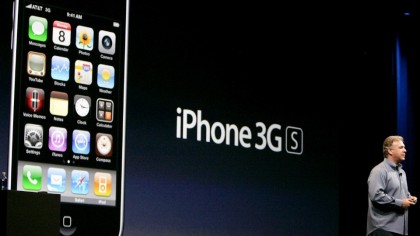
iPhone 3GS, June 8 2009
Was the launch of the iPhone 3GS the first time we felt déjà vu with an iPhone launch? Once again it was announced at the WWDC event (this time on June 8, 2009), which returned to the Moscone Center in San Francisco.
This was also the first 'S' variant of an iPhone, with the 'S' standing for 'Speed', according to the launch keynote.
This time Phil Schiller, senior vice president of worldwide marketing at Apple Inc., took to the stage, and like last year's event the beginning of the keynote focused on software and the new MacBook, as well as shouting about the success of both the App Store, which by then had over 50,000 apps, as well as the fact that over 40 million iPhones and iPod touches had been sold.
The iPhone OS 3.0 software was also announced, and some apps were demoed – with varying success, with a noticeable problem occurring when a guitar was plugged into the iPhone. Embarrassing, but at least it proved that what we were seeing was indeed live.
Just as non-developers' interest was waning, however, the news many of us had been waiting for finally came – the iPhone 3GS was announced.
The design of the iPhone 3GS was pretty much identical to the iPhone 3G, and while that was disappointing at least Apple had worked hard underneath the surface to bring us a much faster and more powerful handset.
The 3G connection got a boost to the faster 7.2Mbps HSDPA, a 3MP camera that could record video was included, along with a compass, voice operation and a choice of 16GB and 32GB versions.
The Find My iPhone feature also made its debut, allowing Mobile Me users to locate their lost iPhone on a map, send messages, and even wipe the handset if it had been stolen.
The highs: There's still a thrill in seeing a new iPhone, and although the iPhone 3GS seemed familiar, there was enough hardware improvements that made this a worthwhile upgrade from the original iPhone.
The lows: Aside from a few duff app demonstrations, the biggest problem with the iPhone 3GS launch was a creeping sense of "haven't we seen this before?" This was the third major release for the iPhone, and that's not something we should have been feeling so early on.
Rating 5/10
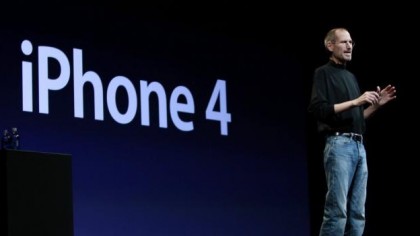
iPhone 4, June 7 2010
The WWDC 2010 event in San Francisco was the where the world got its first look at the iPhone 4, with Steve Jobs once again taking to the stage, boasting that the new flagship handset from Apple was the thinnest smartphone in the world.
While the launch of the iPhone 3GS the year before felt like it was going over old ground in parts, the radically redesigned iPhone 4 ensured the iPhone remained relevant in the face of increasingly stiff competition from Android devices. As Apple said: "this changes everything. Again."
The iPhone 4 featured Apple's new high-resolution "Retina Display", with a high pixel density for incredible clarity and sharpness. The iPhone 4 was powered by Apple's new A4 processor, which gave the handset a much needed power boost and enabled it to handle multi-tasking, making the iPhone even more versatile.
The FaceTime video chat feature was also included (along with a front-facing camera for the first time) and the new operating system, iOS 4, was introduced.
Sadly while the innovations that Apple brought with the iPhone 4 were welcome, the surprise of the new handset was lessened by a series of high profile leaks that gave us an idea of what Apple was planning to show, including a prototype that was bought by Gizmondo for $5000.
This was the first time serious leaks had emerged in the run up to Apple's event, and ever since they have played a big part in the run up to a new iPhone launch.
While these leaks are great for fans who are impatient to find out more, it also meant that a little of the surprise - and a bit of the magic - of a new iPhone launch was also lost.
The highs: After the conservative iPhone 3GS it was great to see Apple firing on all cylinders again and radically overhauling the iPhone design. Its boldness was rewarded with 600,000 pre-orders being placed within 24 hours, and Apple kept it as its flagship handset for 15 months – the longest time before a successor was announced.
The lows: The high profile leaks leading up to the launch of the iPhone 4 lessened the impact of the new device's reveal, but it did at least show how hungry the world was for information about the new iPhone. While the event was a big success, reports started to emerge that problems with the new antenna design meant that the iPhone 4 would lose signal if held in a certain way – a serious flaw in Apple's usually impeccable designs.
Rating: 7/10
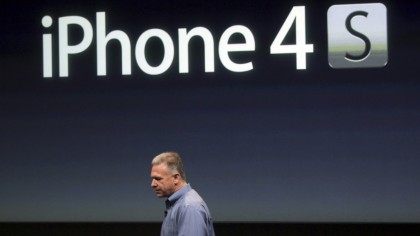
iPhone 4S, October 4 2011
The announcement of the iPhone 4S on October 4, 2011 at Apple's Cupertino campus was a bittersweet moment for Apple, as the event was largely overshadowed by the death of Steve Jobs the day after.
While the "S" of the 3GS stood for speed, according to new Apple CEO Tim Cook, the letter this time stood for Siri; Apple's new voice-activated virtual personal assistant that was exclusive to the handset at the time.
As with the iPhone 3GS, the iPhone 4S retained the design of its predecessor, while including overhauled technology on the inside. This included a much faster Apple A5 processor and a boosted 8 megapixel camera that could now record 1080p video.
As with previous iPhone reveals, the new iPhone 4S ushered in new software as well, iOS 5, which brought with it iCloud, iMessage and the Notification Center, among other new features.
Although Job's absence from the launch casted a long shadow over the event, it also showed how important the iPhone was to Apple. No longer consigned to a cameo appearance at WWDC, the iPhone 4S debuted at a special "Let's Talk iPhone" event. Finally the iPhone was the star of the show.
Highs: We no longer had to sit through talk of software, Macs and developer-orientated tools, with a special iPhone event that concentrated on giving us what we wanted: info on the new iPhone. It was also Tim Cook's first launch without Steve Job and with all eyes on him, during what must have been a very difficult time, he performed admirably.
Lows: Steve Job's deteriorating health was at the forefront of many people's minds when they watched the announcement, and through no fault of Apple, this was a launch that was characterised as much by who was absent, as by what was there.
Rating: 7/10
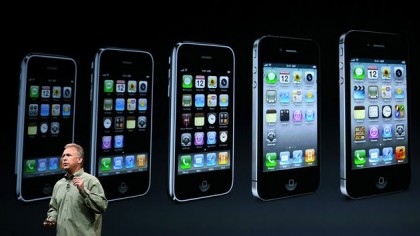
iPhone 5, September 21 2012
On September 21, 2012, Apple announced "the biggest thing to happen to iPhone since iPhone", the iPhone 5. The design was once more overhauled with an aluminium-based body that was thinner and lighter than any iPhone that had come before, with Tim Cook proudly announcing that "today we're taking it to the next level. Making a huge leap."
The screen also became taller, with a new aspect ratio that made watching widescreen videos when held horizontally much more enjoyable, and as Phil Schiller explained "we're able to add a fifth row of icons", making the new iOS 6 software even more easy to use. Once again the new iPhone get a power boost with the Apple A6 chip, and it now supported 4G LTE networks for even faster web browsing.
With the new screen and aluminium body, the iPhone 5 was a big departure, and in the words of Schiller, "it's the most beautiful product we've ever made."
Unfortunately, leaks similar to the ones that dulled the surprise of the iPhone 4 launch returned, so if you'd been keeping an eye on the rumours in the run up to the iPhone 5, the handset that finally rose from the ground in September and floated on stage would again feel familiar.
The highs: The iPhone had now firmly established itself the most important aspect of Apple's business and this event showed that, with a confident company taking to the stage to boast of critical acclaim and high sales.
The lows: Leaks once again spoiled some of the surprises, but overall the event was a big success, though it lacked some of the huge curveballs of earlier releases.
Rating: 8/10
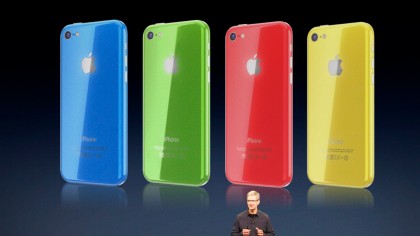
iPhone 5S and 5C, September 10 2013
By the launch of the iPhone 5S we had settled into a familiar launch strategy where every other year Apple would unveil an 'S' variant that would continue the design of its predecessor, while upgrading the technology inside.
The launch event for the iPhone 5S could have been rather predictable, then, but it was noticeable as the first time that Apple launched not one, but two iPhones at the same time.
As Tim Cook said on the night "in the past, when we announced a new price, we lowered the price of the current iPhone, making it even more accessible. This year, we're not going to do that… we're going to replace the iPhone 5 with not one, but two new designs".
Phil Schiller then returned to the stage to announce the iPhone 5C, a mid-range variant based on the iPhone 5. "The iPhone 5C has an incredible new design, one that's more fun and colorful than any design we've done before. A few of you might have seen it around the web."
As Schiller jokingly referenced, leaks had once again outed the iPhone 5C before its official showing – but at least Apple was remaining positive about it.
The iPhone 5C departed from the aluminium and glass design of the iPhone 5 in favour of a hard-coated polycarbonate casing, and rather than the iPhone 5 lowering in price with the launch of the new iPhones, the iPhone 5C was designed to sit at that lower price point.
The expected iPhone 5S was also announced, with Schiller calling it "the most forward thinking of our devices; in fact, it might be the most forward-thinking device ever" and it kept the design of the iPhone 5, bringing new features such as the Touch ID fingerprint sensing technology, along with an upgraded camera and the new A7 dual-core processor, which was the first 64-bit processor used in a smartphone.
As usual the latest version of the operating system, iOS 7, also debuted on the new models.
The highs: Apple was able to break out of its routine by announcing two new devices, making sure everyone talked about the event afterwards.
The lows: The iPhone 5C would have been a great surprise if it hadn't been for the leaks that preceded it. Also no matter how enthused Apple was about the mid-ranger, we never really warmed to it, with Apple still pitching it at a price higher than its competitors.
Rating: 6/10
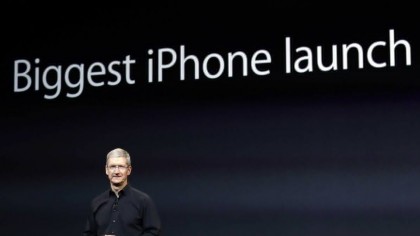
iPhone 6 and iPhone 6 Plus, September 9 2014
The Apple that held its event on September 9, 2014 at the Flint Center for Performing Arts in Cupertino, California was a different company to the one at previous events. While the iPhone continued to be a success, it was losing market share to its competitors, with many people pointing to the relatively small screen size of previous iPhones as a potential reason.
Rumours had been swirling that to combat this Apple was working on two new iPhone models with larger displays, and on September 9 it came to pass, with the unveiling of the 4.7-inch iPhone 6 and the 5.5-inch iPhone 6 Plus; Apple's first foray into the phablet market.
The choice of the Flint Center was also symbolic for Apple, as it was the location where both the Macintosh and then later the iMac were revealed.
With two pivotal moments in Apple's history occurring at the venue, were we in for another huge reveal? Tim Cook certainly thought so, promising that "today, we are launching the biggest advancement in the history of iPhone."
Cook's use of the word "biggest" surely must have been a calculated move, with an appreciative chuckle from the audience, followed by thunderous applause when both the iPhone 6 and the iPhone 6 Plus were shown off.
Ion-strengthened glass and retina HD displays ensured that it wasn't just the new sizes of the displays that were impressive, with the iPhone 6 boasting 38% more pixels than the iPhone 5S, with the iPhone 6 Plus pushing 185% more pixels.
Amazingly despite both new phones having larger screens than their predecessor, they were also substantially thinner, with the iPhone 6 measuring 6.9mm, and the iPhone 6 Plus having 7.1mm – compared to the 7.6mm thickness of the iPhone 5S.
The highs: The new screen sizes of the iPhone 6 and iPhone 6S showed another evolution in the design of the iPhone, and showed that Apple was happy to follow when it could not lead. Despite losing ground to its competitors, the event was both relaxed and confident, with plenty of jokes and a breakneck speed that showed Apple was still full of ideas.
The lows: Sometimes Apple can be its own worst enemy, and the reason its 2014 event won't be remembered as the best launch of an iPhone was because the two new handsets were upstaged by Apple's announcement of the Apple Watch. The iPhone had once been the "One More Thing" surprise announcement that had everyone talking about it the next day, but now they had to share the limelight with Apple's first ever smartwatch.
Rating: 8/10

Matt is TechRadar's Managing Editor for Core Tech, looking after computing and mobile technology. Having written for a number of publications such as PC Plus, PC Format, T3 and Linux Format, there's no aspect of technology that Matt isn't passionate about, especially computing and PC gaming. He’s personally reviewed and used most of the laptops in our best laptops guide - and since joining TechRadar in 2014, he's reviewed over 250 laptops and computing accessories personally.